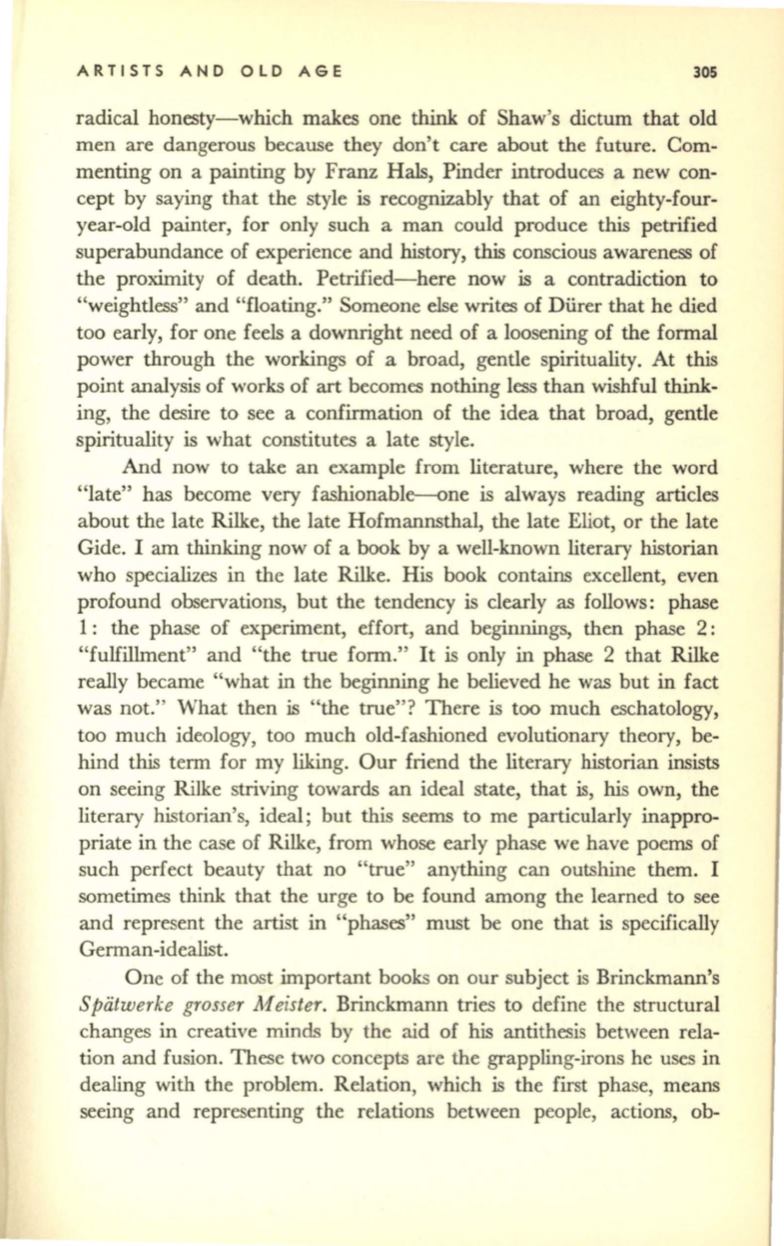
ARTISTS AND OLD AGE
305
radical honesty-which makes one think of Shaw's dictum that old
men are dangerous because they don't care about the future. Com–
menting on a painting by Franz Hals, Pinder introduces a new con–
cept by saying that the style is recognizably that of an eighty-four–
year-old painter, for only such a man could produce this petrified
superabundance of experience and history, this conscious awareness of
the proximity of death. Petrified-here now is a contradiction to
"weightless" and "floating." Someone else writes of Durer that he died
too early, for one feels a downright need of a loosening of the formal
power through the workings of a broad, gentle spirituality. At this
point analysis of works of art becomes nothing less than wishful think–
ing, the desire to see a confirmation of the idea that broad, gentle
spirituality is what constitutes a late style.
And now to take an example from literature, where the word
"late" has become very fashionable-one is always reading articles
about the late Rilke, the late Hofmannsthal, the late Eliot, or the late
Gide. I am thinking now of a book by a well-known literary historian
who specializes in the late Rilke. His book contains excellent, even
profound observations, but the tendency is clearly as follows: phase
1: the phase of experiment, effort, and beginnings, then phase 2:
"fulfillment" and "the true form." It is only in phase 2 that Rilke
really became "what in the beginning he believed he was but in fact
was not." What then is "the true"? There is too much eschatology,
too much ideology, too much old-fashioned evolutionary theory, be–
hind this term for my liking. Our friend the literary historian insists
on seeing Rilke striving tow.ards an ideal state, that is, his own, the
literary historian's, ideal; but this seems to me particularly inappro–
priate in the case of Rilke, from whose early phase we have poems of
such perfect beauty that no "true" anything can outshine them. I
sometimes think that the urge to be found among the learned to see
and represent the artist in "phases" must be one that is specifically
German-idealist.
One of the most important books on our subject is Brinckmann's
S
piitwerke grosser Meister.
Brinckmann tries to define the structural
changes in creative minds by the aid of his antithesis between rela–
tion and fusion. These two concepts are the grappling-irons he uses in
dealing with the problem. Relation, which is the first phase, means
seeing and representing the relations between people, actions, ob-


